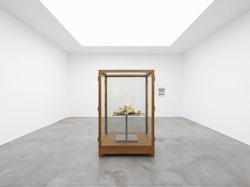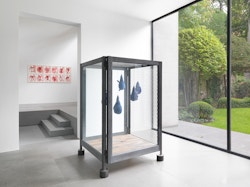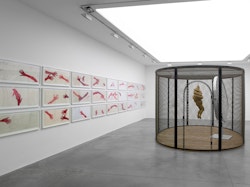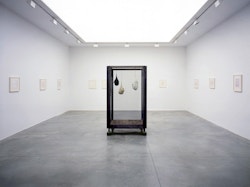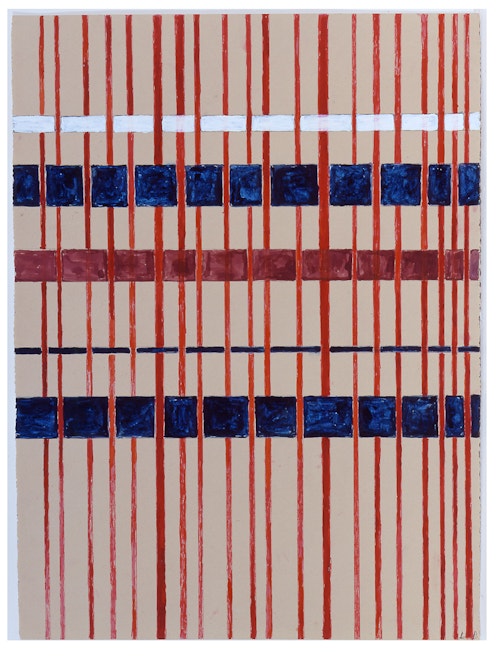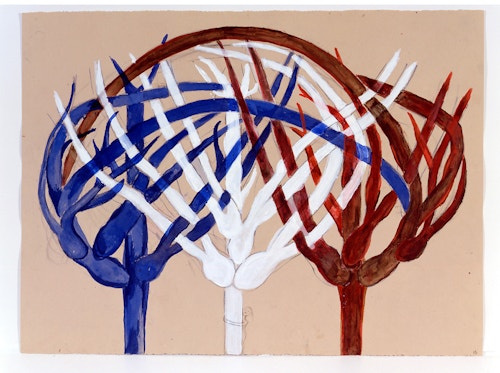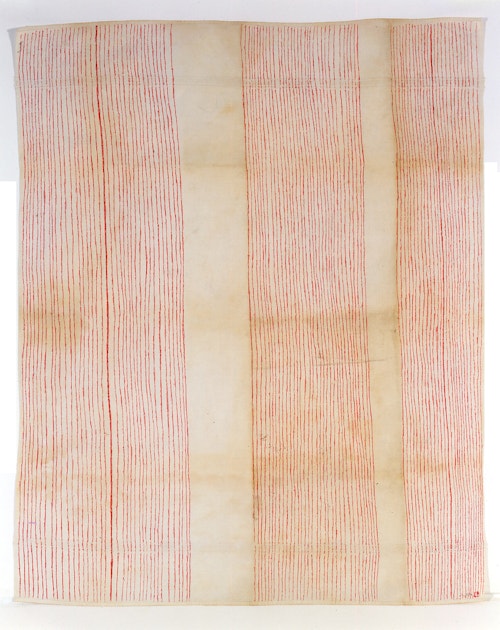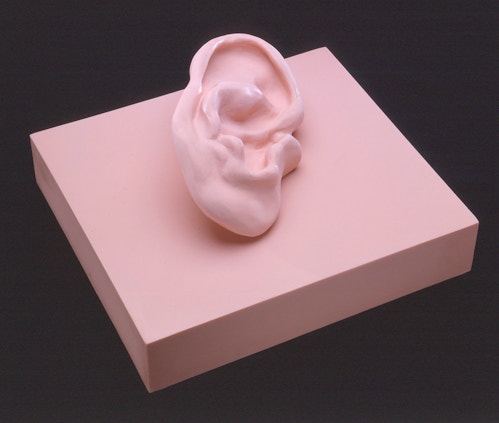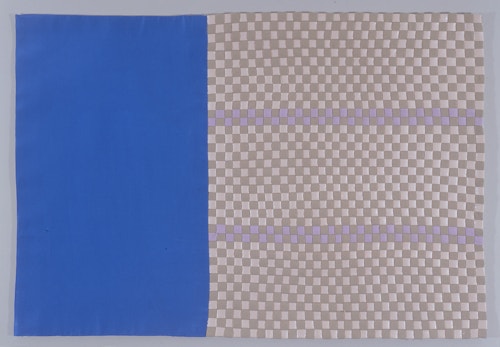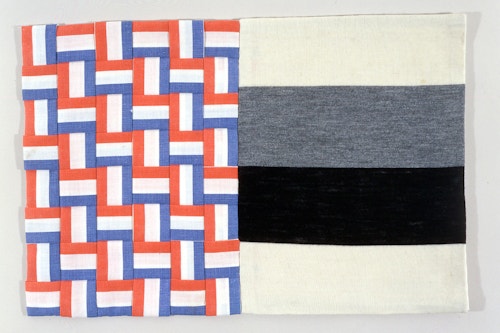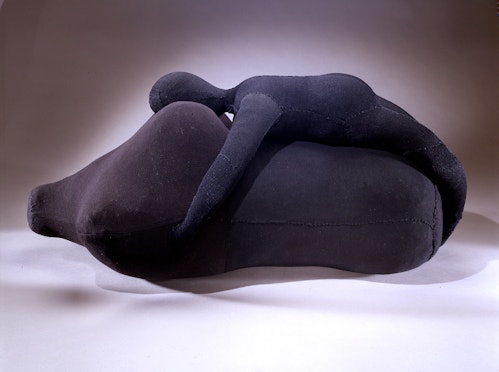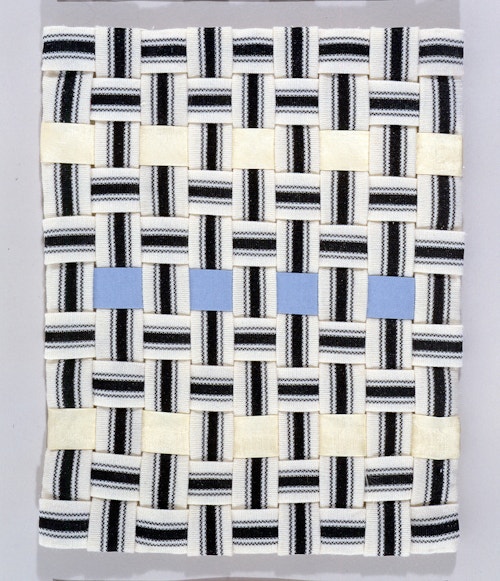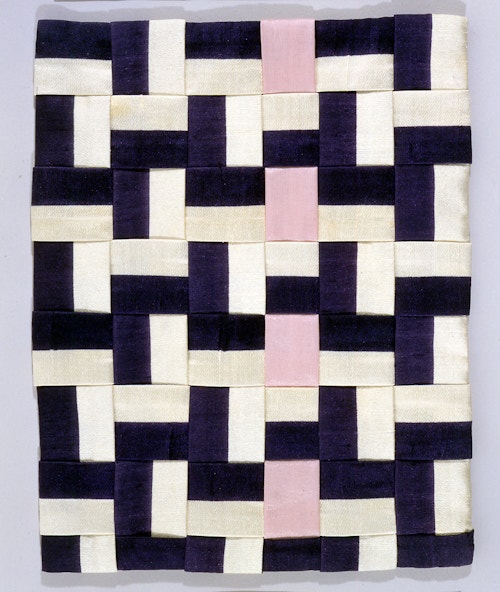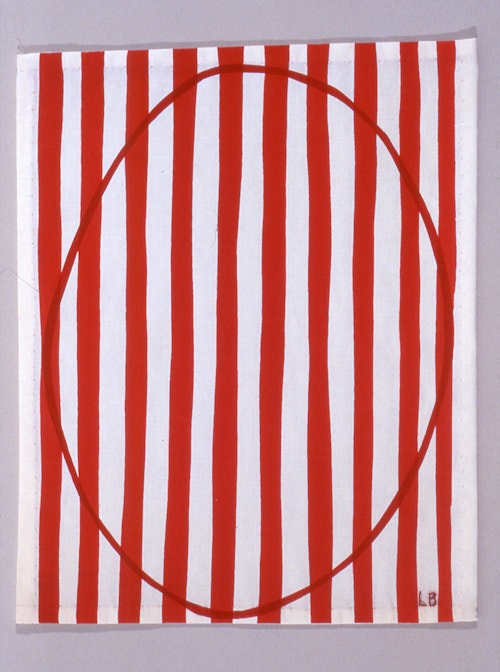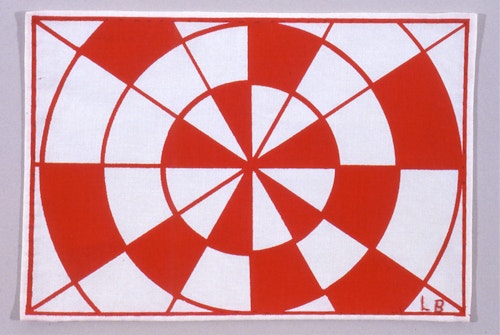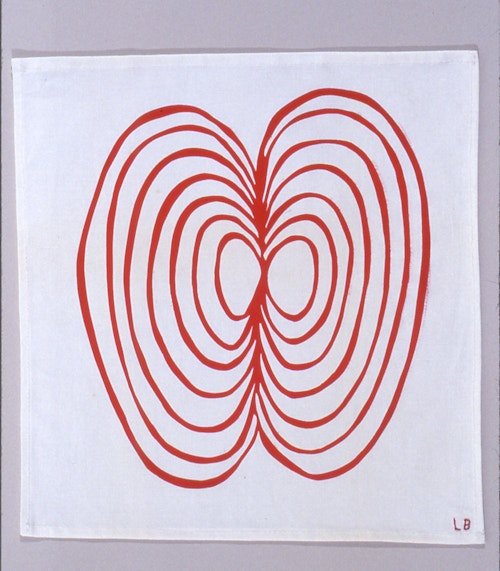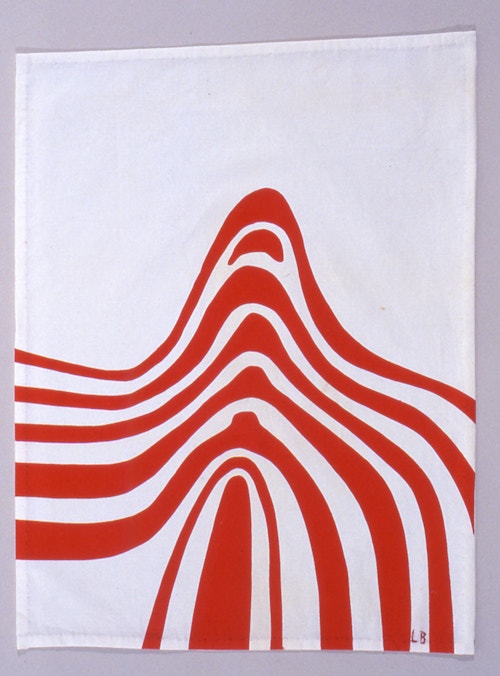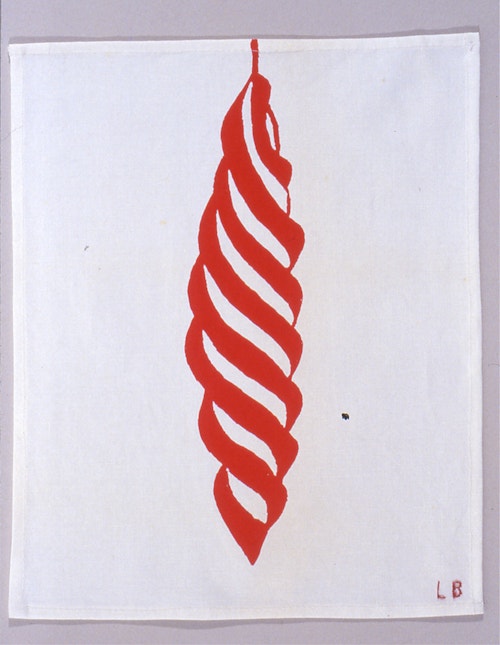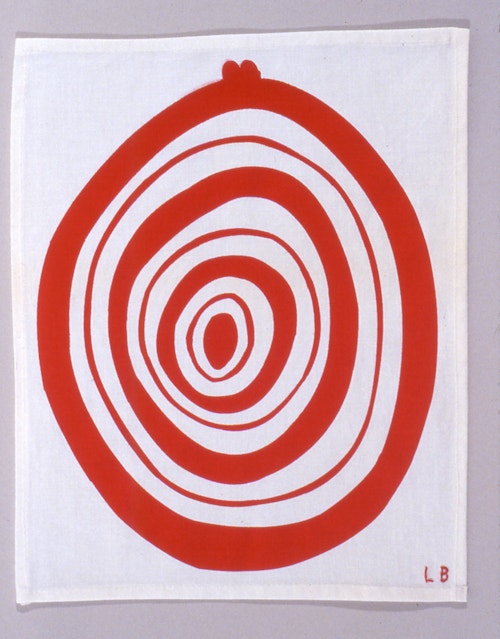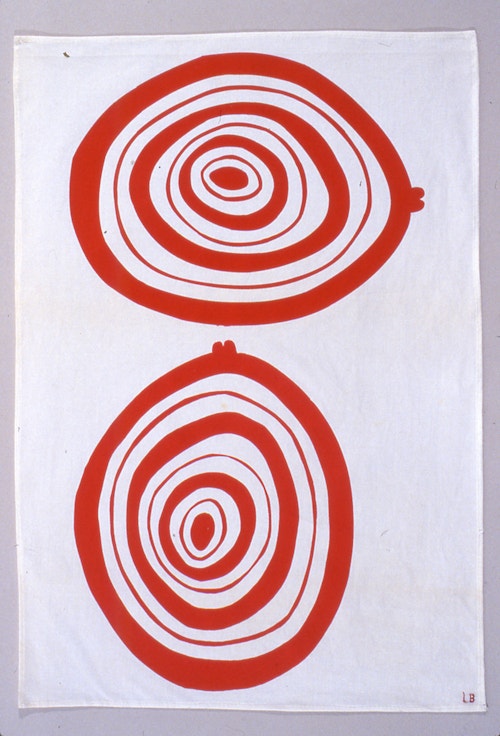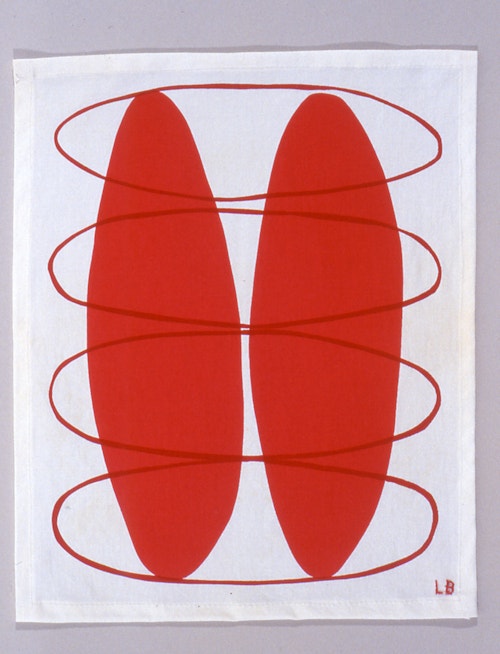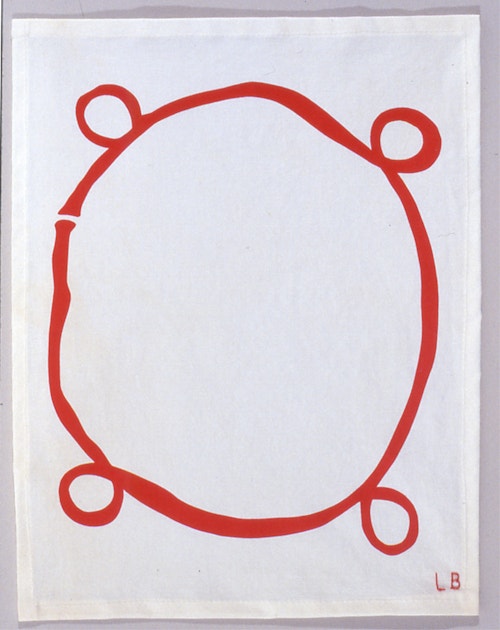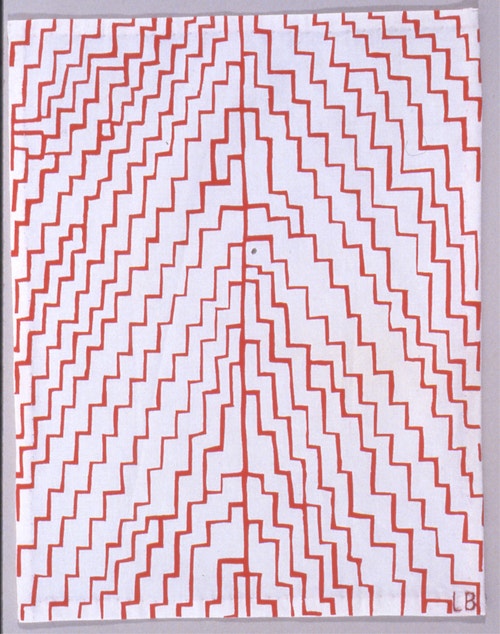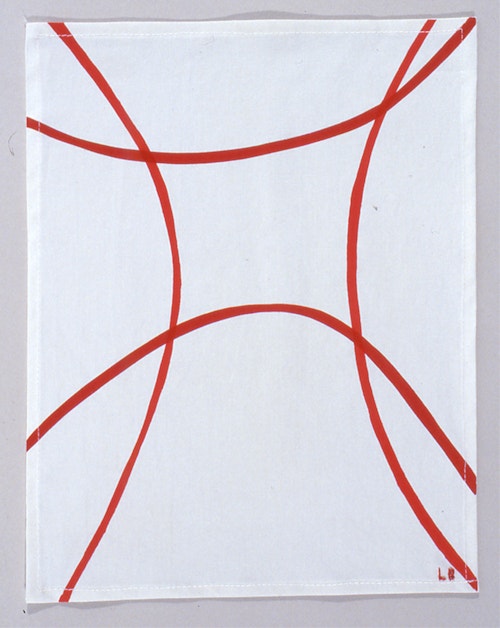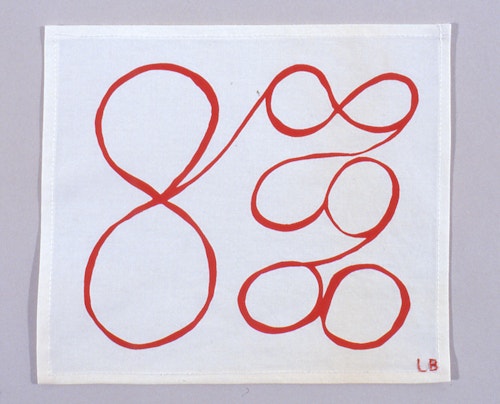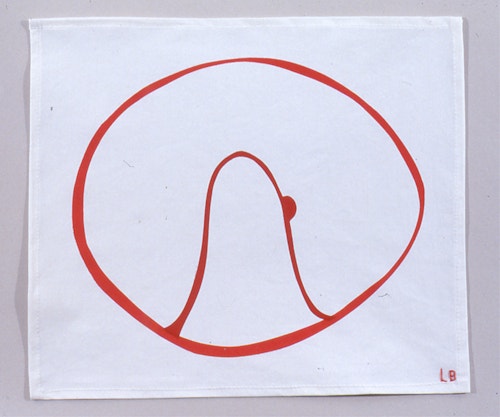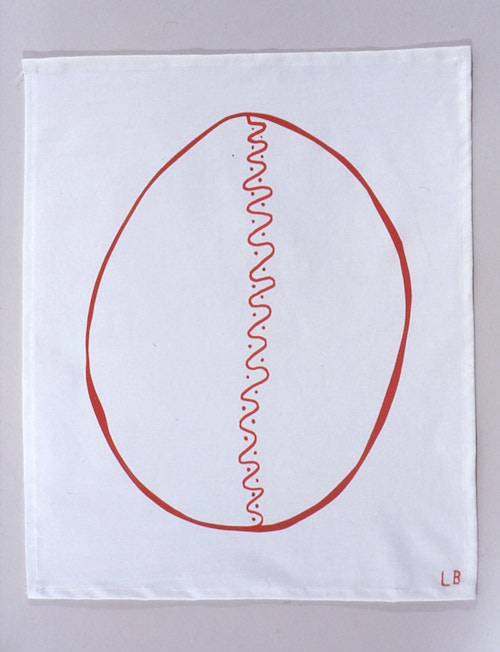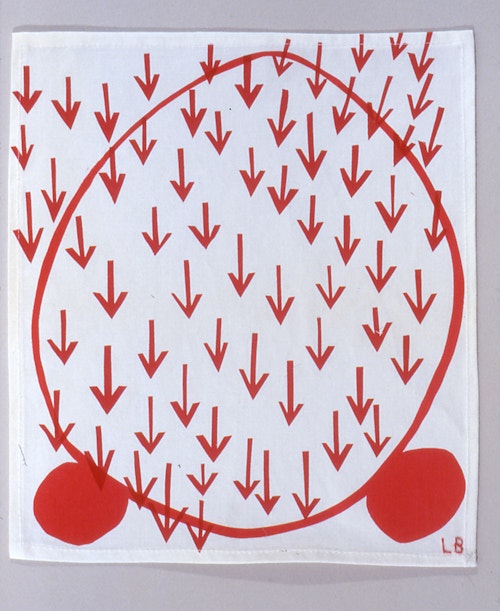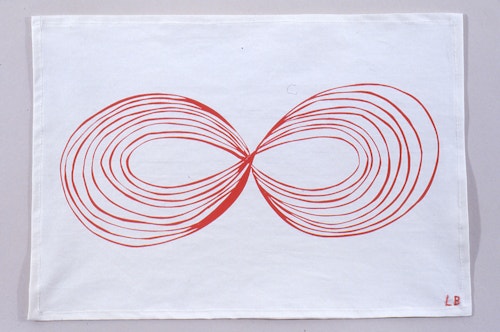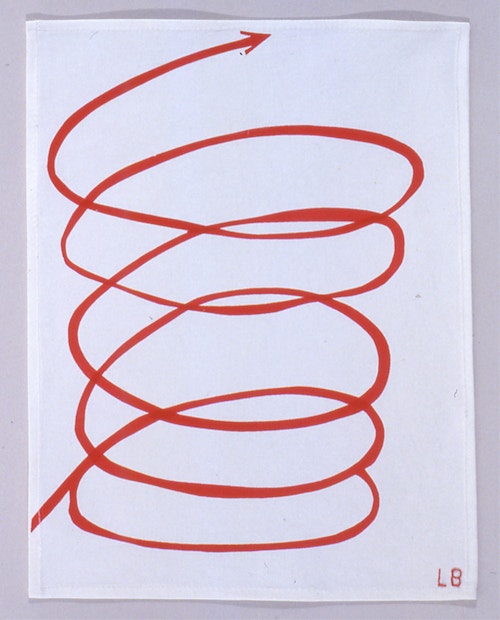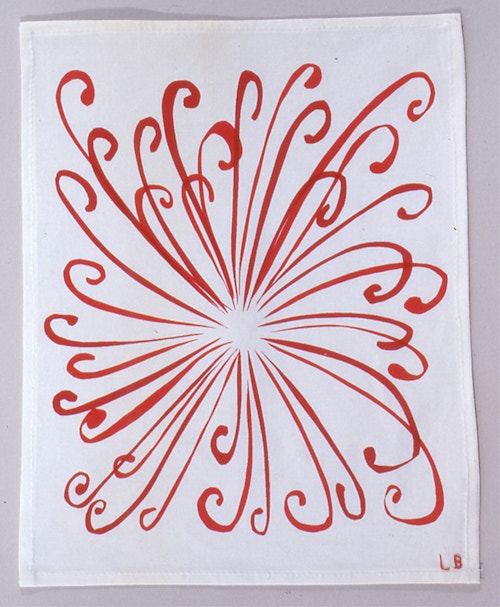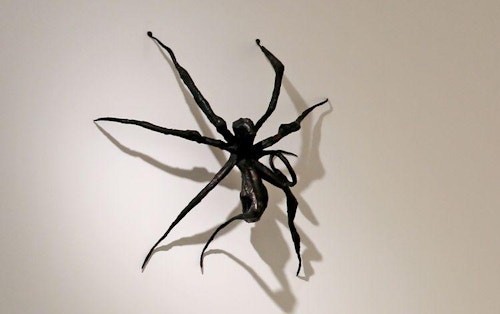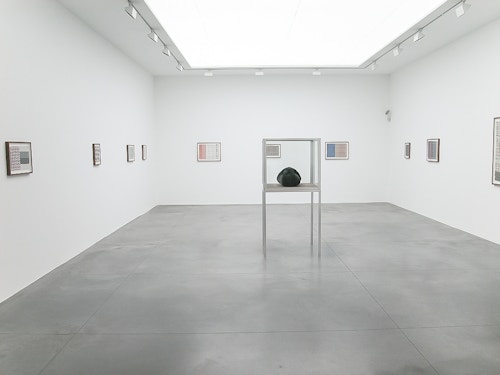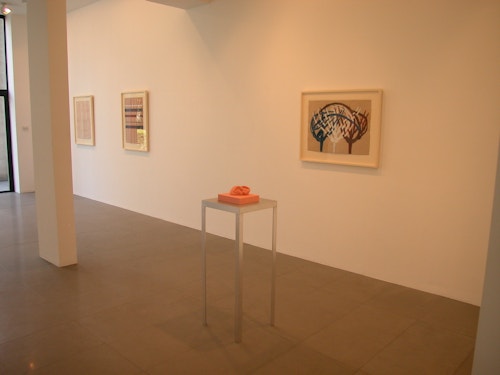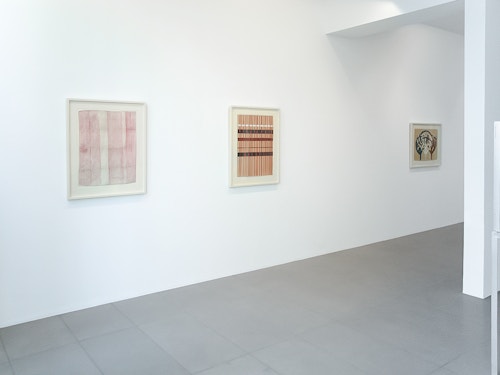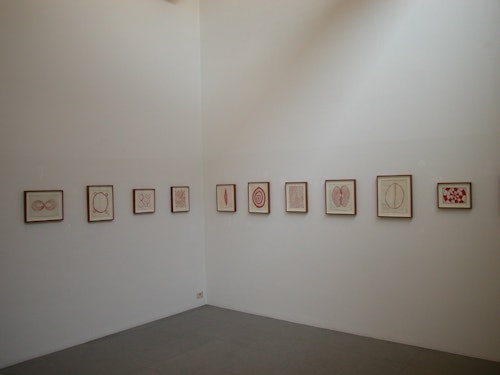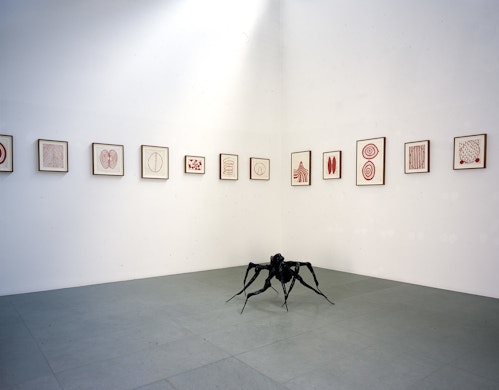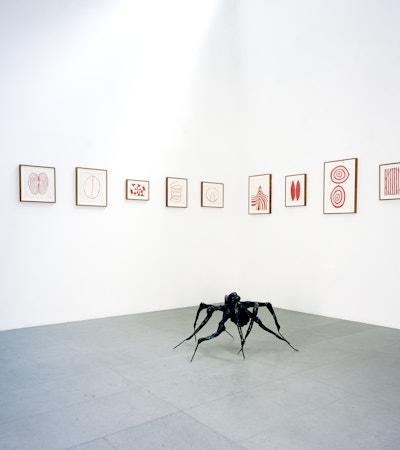
Louise Bourgeois New Sculptures and The Woven Drawings
For her second solo exhibition in the gallery, and in Belgium, Louise Bourgeois has made a selection of recent sculptures in fabric, screen prints on vintage cloth and a completely new series of wall hangings, entitled “The Woven Drawings”. Fabric and the activity of cutting, stitching and weaving are elements that date back to Louise Bourgeois’ early childhood and her parent’s tapestry restoration workshop.
After constructing enormous, benevolent spiders that recalled her mother’s strength and fragility, “Louise Bourgeois suddenly felt the need to rummage through the house from top to bottom, opening chests and cupboards, emptying them of old garments and linen item by item. First of all came the embroidered handkerchiefs in her bridal trousseau, on which she drew and stitched, sometimes incorporating small bones suggestive of skeletons. Then she attacked her clothes. It is not surprising that clothing has become the substance of Bourgeois’s sculpture. Clothes are the body’s second skin, they cling not only to its shape but also to its spirit, enclosing the fragrance of a specific period in their folds (the recollection of a fashion or stage of life). And for Bourgeois, sculpture is the body. “My body is my sculpture”, she continues to say. Clothing is also a protection, a kind of shelter. Furthermore, as the daughter of tapestry restorers, Bourgeois’ childhood was steeped in a universe of bobbins, threads, needles, balls and skeins of yarn. For her, cutting and stitching is the equivalent of sculpture, which she views as a three-dimensional cutout…
Thus, beginning in 1995, Bourgeois pursued her reconstruction of the past by turning to her own carefully preserved clothes, lifeless relics paradoxically charged with all of life’s emotions and hung them on metallic trees: Poles. After having stripped her wardrobe, Bourgeois continued to sew, cut, pad and stuff, using various pieces of fabric – towels, berets, stockings and pantyhose. The resulting little dolls, often headless, are endowed with breasts and genitals and are displayed in showcases as though the artist sought to distance the textural effect of the material, creating highly-sexed figures or infants”. A number of these sculptures will be on view in the exhibition.
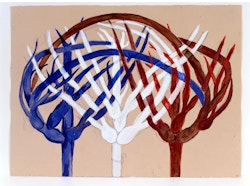
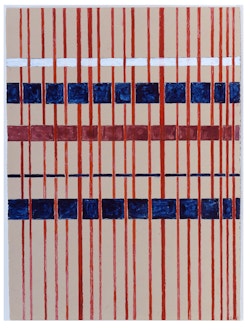
At the center of this exhibition, are a series of new works that are presented for the first time, “The Woven Drawings”. They are abstract drawings, woven with strips cut from shirts, skirts and jackets that are hung on the wall. “The Woven Drawings” refer very directly to the handmade patchwork and quilts that American housewives composed so carefully in the earlier days. Throughout the 19th century, quilts provided an acceptable medium through which women could express themselves, as well as a means of documenting the significant events that occurred during their lives. Women did not simply quilt in order to provide warm blankets for their families, but they quilted for themselves as well. They quilted to bring beauty to bleak surroundings, as a means to record their experiences, both good and bad, to relieve stress, and most importantly, to express their thoughts, concerns, and ideas.
There is definitely a correlation between the activity of weaving and the relationship of Louise Bourgeois to her mother. Weaving correlates psychologically to Bourgeois as a form of binding and holding things together as a fight against an abandonment complex.
Fragments from “M.-L. Bernadac, Behind the Tapestry, in Louise Bourgeois (cat.), Bordeaux-London, 1998-1999.
